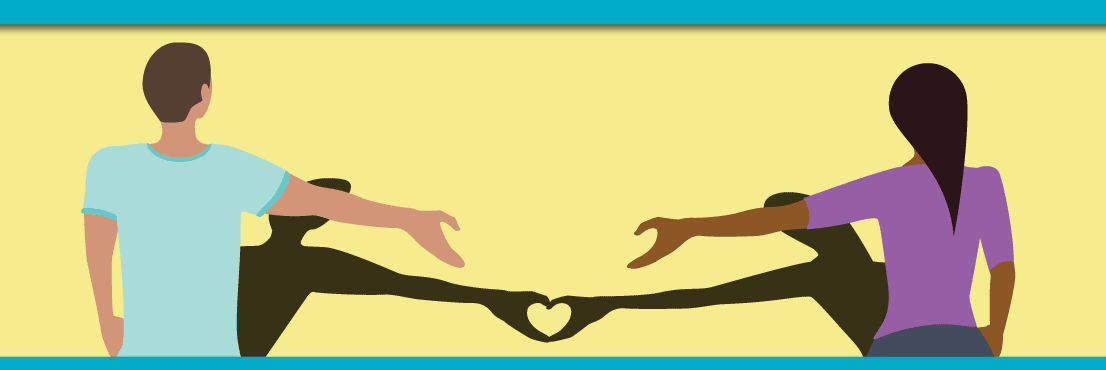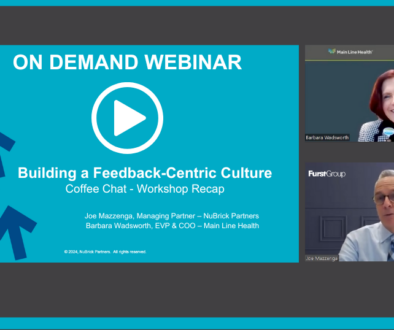Socially Connecting, Physically Distancing:
How changing verbiage can ease COVID isolation
By Joe Mazzenga, Managing Director of NuBrick Partners

Social distancing is one of the most recognizable requirements of life during COVID-19. The phrase describes the recommended minimum 6-foot distance that people should maintain in an effort to reduce the potential spread of the virus. The result for many has been to sequester at home. Connections with friends and extended family, and collaboration with co-workers have become more than ever in the past, virtual.
Concerns swirl about urgent topics like testing, vaccination, the economy, and even simply how to behave in a safe and responsible manner as communities reopen and we can finally venture together back into public spaces. These concerns can create very real anxiety.
Humans are social creatures who find comfort and calm in the psychological and emotional benefit we derive from being in the proximity with those who know us, value us, and who call us friends and family. The phrase itself, “social distancing,” implies limiting those vital relationships and disrupting those important human interactions precisely when many are struggling psychologically from the stressors and uncertainties of this global pandemic.
While science indicates that the practice of distancing can “flatten the curve,” another phrase that has entered the lexicon in recent months, the term “social distancing” is, at best, inaccurate, and arguably does more harm than good to our psychology. To be sure, for our own safety and that of others around us, we need to continue to keep our distance in order to stop the spread of the virus. But given the duration and psychological repercussions of this crisis, people need social connection, not separation. Therefore, a more accurate, and indeed, more helpful term is “physical distancing.”
To be in the company of others is human nature. Interactions with those close to us release a chemical cocktail that boosts our immune system, mood, optimism and soothes our minds, which have, no doubt, been inundated by recent events. We have an urge to be in proximity – with masks on, of course, or adequately physically distant with masks off – to begin to regain the emotional balance and comfort that all humans crave. Now, more than ever, instead of social distancing, we should be socially connecting, while physically distancing.
I recently heard the story of a cardiovascular surgeon who shared an experience he had with a new patient who was referred to him for a surgery consult. Both the surgeon and the new patient wore masks as they met in his office for the very first time. Early in the conversation, the surgeon sensed a heightened level of anxiety with his new patient as she described her condition and concerns.
At this point, he asked her if she would be open to an idea. She agreed. He suggested that he would step all the way back to the end of his office and invited her to stand all the way at the other end. This created an 18-foot distance between them.
With the safe distance, the surgeon suggested they each take off their masks since neither had met before and did not know what each other looked like. He offered to remove his mask first. With his mask down, he smiled at her and said, “so this is what I look like”.
Then the surgeon said, “if you’re comfortable, I’d like you to take your mask off so that I can see your face and see what you look like.” The new patient then lowered her mask, and after a few brief moments and a couple of sentences, she began to cry. As their conversation continued, what was apparent and powerful to the surgeon was how his experience with this new patient from the beginning of their consultation to the end was remarkably different. She was more open, present and transparent with him.
Likewise, she experienced being truly seen and connected with in a moment of fear and concern. The surgeon realized that by the end of their meeting, it felt like he was speaking to a different person.
It is well known that, psychologically and neurologically, our faces are filled with mirror neurons, sources of connectivity that resonate with other people. Our brains are deeply wired to engage and “mirror” other people in our presence. While maintaining a safe physical distance, the surgeon and the patient removed their masks, literally and figuratively, and created a remarkable connection that was powerful and healing.
As this crisis continues and evolves, we will need opportunities to socially connect in whatever ways possible, as often as possible, while safely physically distancing ourselves.
As we seek to recharge our psychological batteries that are being depleted by this crisis, it will be our close relationships, our personal and professional social connections, that will serve as a primary power supply. Keep your physical distance for now but embrace your social connections.
Watch our recent webinar series on leading through extraordinary times:







